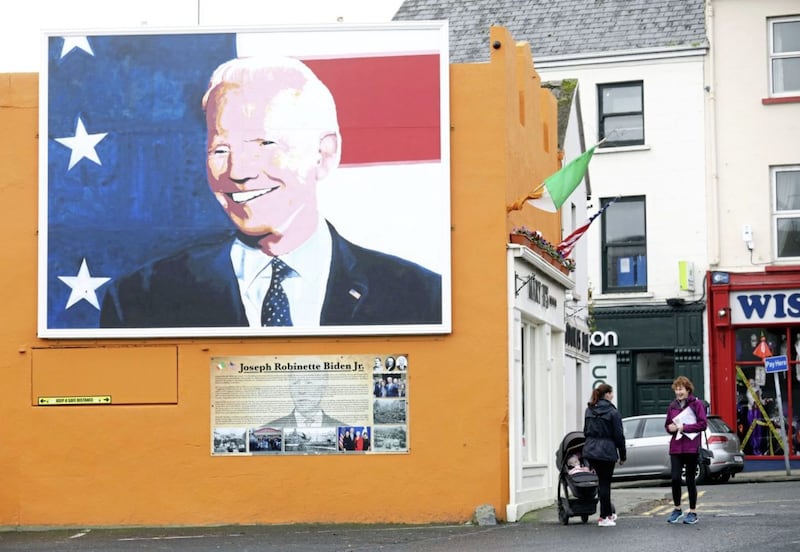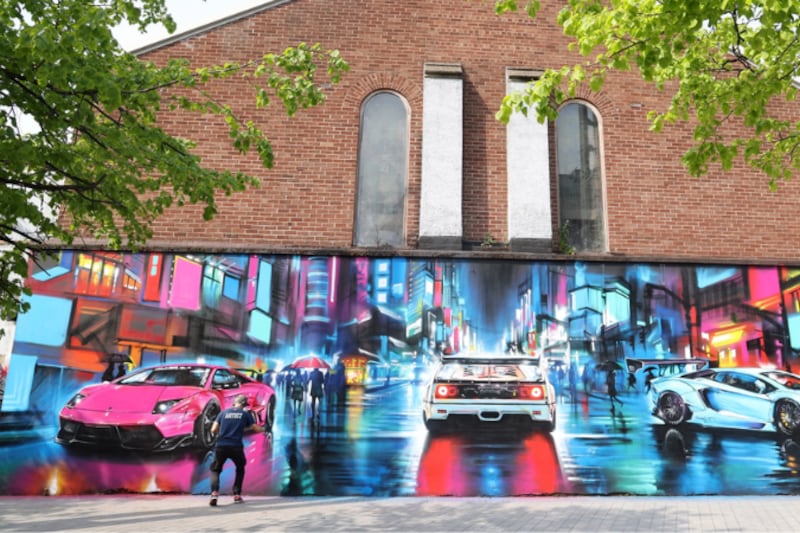Why are there murals in Northern Ireland?
Murals in Northern Ireland are regarded as visual symbols of its history and contemporary political, cultural and social divisions. Academics believe that these images have a longer continuous tradition than anywhere in the world, older even than the Mexican tradition.
Murals on peace walls and mural tours
In recent years the murals have become a tourist attraction and black taxi tours are popular with visitors to Belfast and Northern Ireland. Some murals are painted on Belfast peace walls as well as on the international wall on Falls Road in west Belfast.

Read more: What are peacelines in Belfast and Northern Ireland?
How many murals are there?
It is impossible to say exactly how many murals exist at any one time as new ones are added on a regular basis but in 2014 Dr Bill Rolston’s book Belfast Mural Guide estimated that in Belfast alone there are as many as 300 quality images on public view.

The history of murals
Murals are often seen as a sign of the cultural, political, and social representation of the particular community in which they are painted. The images can be found mainly in Protestant/unionist/loyalist and Catholic/nationalist/republican communities but also on the walls of Belfast and Derry.
Are all murals paramilitary related?

No, while there are many murals representing loyalist and republican paramilitary organisations there are also images relating to social, sporting, popular culture and non-Troubles related issues such as golfer Rory McIlroy and musician Van Morrison.
George Best mural


King William and the first murals to be painted
The first murals are thought to have appeared in Belfast and other large towns in Northern Ireland in the early 1900s and depicted King William of Orange’s victory at the Battle of the Boyne in 1690. These hand painted images had originally been seen on Orange Order banners taking part in the annual Protestant/unionist/loyalist Twelfth of July parades but then began to be painted on to large gable walls in working-class districts of Belfast.


Read more:
With the outbreak of the Troubles in 1969 the use of murals remerged as a sign of the demarcation of Protestant/unionist/loyalist and Catholic/nationalist/republican areas. While King William murals were still the most dominant images to be scene in the 1970s, by the 1981 Hunger Strike murals had become an important use of political protest for many in Catholic/nationalist/republican working class areas. Murals were used to portray the prison conditions of republican prisoners protesting against the government’s removal of political/special category status.

The Bobby Sands mural
It is a matter of political and culture opinion as to what is the most famous mural in Northern Ireland. Arguably the single most famous mural is the image of IRA hunger striker Bobby Sands which can be seen at Sevastopol Street on the Falls Road in west Belfast adjacent to Sinn Fein headquarters.
Read more: Who are Sinn Fein?

Murals depicting the Battle of the Bogside and the Bloody Sunday massacre in Derry in January 1972 are also known throughout the world.
Falls Road murals in west Belfast
In recent years the ‘International Wall’ murals at Northumberland Street in west Belfast have depicted images including the Israeli bombardment of Gaza, Turkish hunger strikers, imprisoned American Indian campaigner Leonard Peltier, Che Guevarra, Nelson Mandela, slavery abolitionist Frederick Douglass and that of Noah Donohoe, a 14 year-old schoolboy, who was found dead in a storm drain in Belfast in June 2020, six days after he went missing as he cycled across the city to meet friends.


East Belfast murals replaced
Yes, murals are sometimes replaced or painted over by artists who believe that the original theme or issue depicted on a mural is no longer relevant and should be replaced by a more contemporary theme. In recent years some paramilitary murals, in both Protestant/unionist/loyalist and Catholic/nationalist/republican areas, depicting images of masked paramilitary gunmen have been replaced with murals depicting less controversial sporting and cultural issues important to the local community. In 2022 a set of landmark loyalist murals in east Belfast were painted over. The murals adorned the gable walls of properties on the Newtownards Road, and the site, known as 'Freedom Corner', was popular with tourists and other visitors to the city.


Are murals only painted in Protestant, unionist, loyalist and Catholic, nationalist, republican areas?
No, while murals had traditionally been painted in working class Protestant/unionist/loyalist and Catholic/nationalist/republican communities during the Troubles other more contemporary social, sporting, and cultural images can now be seen throughout Belfast city centre.

Are murals government funded?
Throughout the Troubles government agencies did not engage with or publicly fund mural artists in Northern Ireland for fear they would be accused of promoting violence. However, since 2006 government agencies have provided funding for a ‘re-imaging’ programme to remove the most offensive murals and replace them with public art, including new murals.


Is there a future for murals?
Leading academic Bill Rolston wrote: “There are those who suspect that the logical outcome, if not the intention, of the state-down intervention is to remove the politics from the mural tradition to provide pleasant pictures which, even if artistically sound, say little of the identity and beliefs of the communities in which they appear. Were that to be the outcome, it would be a sad ending to a remarkable story.”








